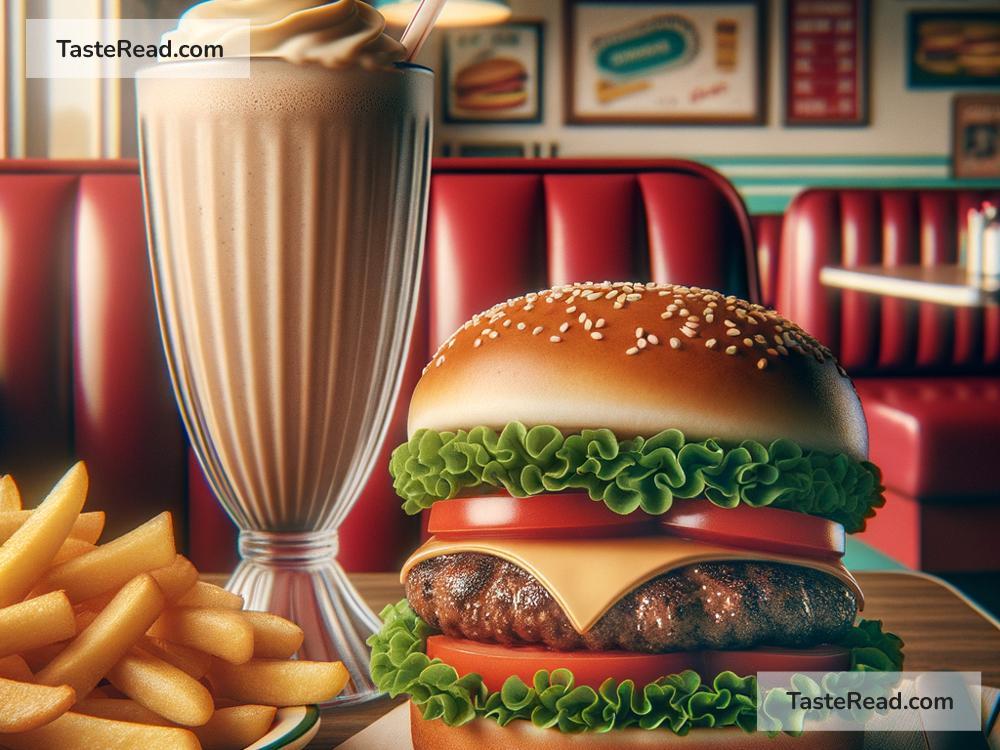The History of the American Burger
The hamburger, often known simply as a “burger,” is one of the most iconic foods in America. It represents comfort, convenience, and the joy of biting into something flavorful and filling. But how did this sandwich become so popular? Where did it come from? Let’s explore the fascinating history of the American burger, from its humble beginnings to its beloved place in modern culture.
Origins: From Hamburg to America
Believe it or not, the hamburger didn’t start in America. Its roots trace back to the city of Hamburg, Germany. In the 19th century, Hamburg was famous for its port, where visitors tried a dish called “Hamburg steak.” This was a minced beef patty, seasoned and shaped into a flat circle, often served cooked or raw. It was considered fancy and was popular among European travelers.
In the mid-1800s, German immigrants brought their food traditions to America. The “Hamburg steak” gained a small following in places like New York and Chicago during the late 19th century, particularly in the growing cities fueled by industrialization. At that time, it was served on a plate without bread, often with onions, gravy, or a fried egg.
The First Burger with a Bun
The leap from Hamburg steak to hamburger as we know it today came when someone decided to sandwich the beef patty between two pieces of bread or a bun. Who exactly invented this idea is debated to this day. Several people and locations claim to be the birthplace of the burger.
One popular story points to Charlie Nagreen, a food vendor from Wisconsin. In 1885, Nagreen reportedly started selling flattened meatballs between pieces of bread at a fair. He wanted his beef to be portable, so people could walk around and eat it while enjoying the fair. He called it a “hamburger.”
Another claim comes from the Menches brothers, also in 1885, who reportedly served a similar sandwich at a fair in Hamburg, New York. The brothers ran out of pork for sausage patties, so they switched to ground beef and created the hamburger.
Other sources credit Louis Lassen, who ran a small lunch counter in Connecticut. In 1900, Lassen allegedly became the first to sell ground beef on a bun as a quick meal option. Historians often cite his creation as the original hamburger.
The Rise of Burger Restaurants
Fast-forward a few decades, and burgers began to take over America in a big way. The early 1900s saw significant shifts in how people ate meals. The industrial revolution meant people were working longer hours and needed quick, affordable food.
Enter White Castle, the first fast-food burger chain, founded in 1921. Based in Wichita, Kansas, White Castle sold sliders, small square hamburgers, for just five cents. Their clean and efficient restaurants focused on quality and affordability, helping burgers become associated with convenience.
By the 1940s, another major player entered the picture: McDonald’s. Brothers Richard and Maurice McDonald transformed their small California restaurant into a fast-food powerhouse with their “Speedee Service System.” They offered cheap, consistent burgers made quickly, using assembly-line techniques. The first McDonald’s franchise opened in 1955, and by the 1960s, McDonald’s was an international success. Today, McDonald’s is one of the most famous burger chains in the world.
Burgers in Pop Culture
Burgers quickly became more than just food—they became a symbol of American identity. They represented casual dining, family outings, and even fun movie nights. Diners and drive-ins in the 1950s and 1960s often served burgers, turning them into staples of American life during an era when eating out became more common.
Movies like “American Graffiti” and “Grease” showcased the role burgers played in social gatherings, especially among teens. From backyard barbecues to roadside eateries, burgers were everywhere.
The Gourmet Burger Revolution
By the late 20th century, burgers evolved even further. They were no longer just fast food—they had entered the world of gourmet dining. Restaurants began offering premium burgers made with high-quality ingredients, unique sauces, and artisan buns. Chefs experimented with beef blends, toppings, and even non-beef patties, like turkey, chicken, and veggie options.
This period saw the rise of chains like Shake Shack and Five Guys, which focus on freshly made burgers using upscale and customizable ingredients. Burgers also became a canvas for creativity. Today, you can find burgers topped with truffle oil, bacon jam, avocado, fried eggs, and exotic cheeses.
A Global Phenomenon
The American burger spread around the world thanks to chains like McDonald’s, Burger King, and Wendy’s. While each country adds its own local spin, the basic idea remains the same: a beef patty between bread, delicious and satisfying. In some regions, burgers are made with lamb, fish, or spices that match local flavors. You’ll also find creative ingredients like kimchi, curry, or guacamole.
Despite these global interpretations, the American-style burger continues to represent good, simple food shared with friends.
Conclusion: More Than Just a Sandwich
The burger isn’t just a food—it’s a story. It tells a tale of immigration, innovation, and the industrial growth of America. From its European origins to its place on menus around the globe, the burger has grown far beyond its humble beginnings. Whether you’re grabbing a quick bite at a fast-food joint or savoring a gourmet creation, the American burger reminds us of how a simple idea can become an enduring classic.


